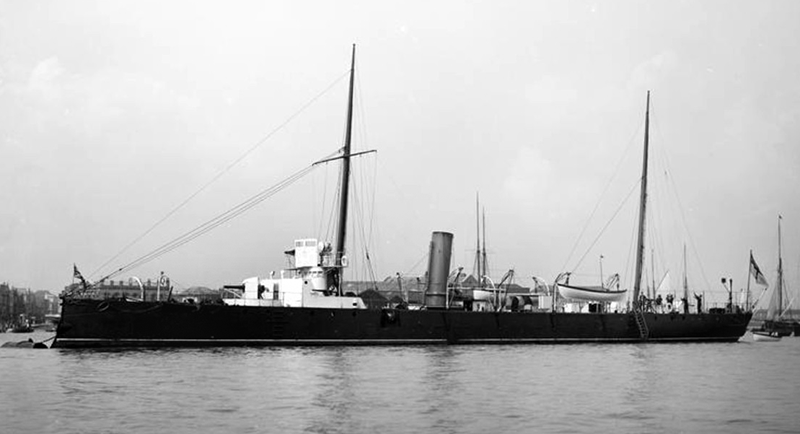
NAVYPEDIA
 Support the project with paypal
Support the project with paypal
Photo

Rattlesnake
Ships
| Name | No | Yard No | Builder | Laid down | Launched | Comp | Fate |
|---|---|---|---|---|---|---|---|
| Rattlesnake | 537 | Laird, Birkenhead | 16.11.1885 | 11.9.1886 | 5.1887 | hulk 1905 |
Technical data
| Displacement normal, t | 550 |
|---|---|
| Displacement full, t |
|
| Length, m | 61.0 pp |
| Breadth, m | 7.01 |
| Draught, m | 3.15 |
| No of shafts | 2 |
| Machinery | 2 3-cyl VTE, locomotive boilers |
| Power, h. p. | natural draught: 1600, forced draught: 2700 |
| Max speed, kts | natural draught: 16.7, forced draught: 19.2 |
| Fuel, t | coal 100 |
| Endurance, nm(kts) | 2800(10) |
| Armour, mm | steel; deck: 19 |
| Armament | 1 x 1 - 102/27 BL Mk II/III/IV/V/VI, 6 x 1 - 47/40 3pdr Hotchkiss Mk I, 2 - 356 TT (1 bow, 1 stern, aw), 2 x 1 - 356 TT (8 at all) |
| Complement | 66 |
Standard scale images

Rattlesnake 1887
Graphics
Project history
Unlike later TGBs Rattlesnake had a protective deck of 19mm steel. She had two fixed tubes and one training tube on either beam. The 102mm gun was mounted forward, and she was the same length as contemporary small cruisers but much narrower and shallower, the latter feature being intended to make torpedoes pass harmlessly under her. Ordered as a result of the Russian war scare, she proved a successful vessel, being kept in service, and still able to make her original speed, when her near-sisters of the Grasshopper class had all been removed from the effective list.
Ship protection
Ship was protected by curved steel 19mm deck.
Modernizations
None.
Naval service
Rattlesnake became virtually hulk in 1905, she was removed from Effective List in 1906.
 HOME
HOME FIGHTING SHIPS OF THE WORLD
FIGHTING SHIPS OF THE WORLD UNITED KINGDOM
UNITED KINGDOM TORPEDO SHIPS
TORPEDO SHIPS RATTLESNAKE torpedo gun boat (1, 1887)
RATTLESNAKE torpedo gun boat (1, 1887)
